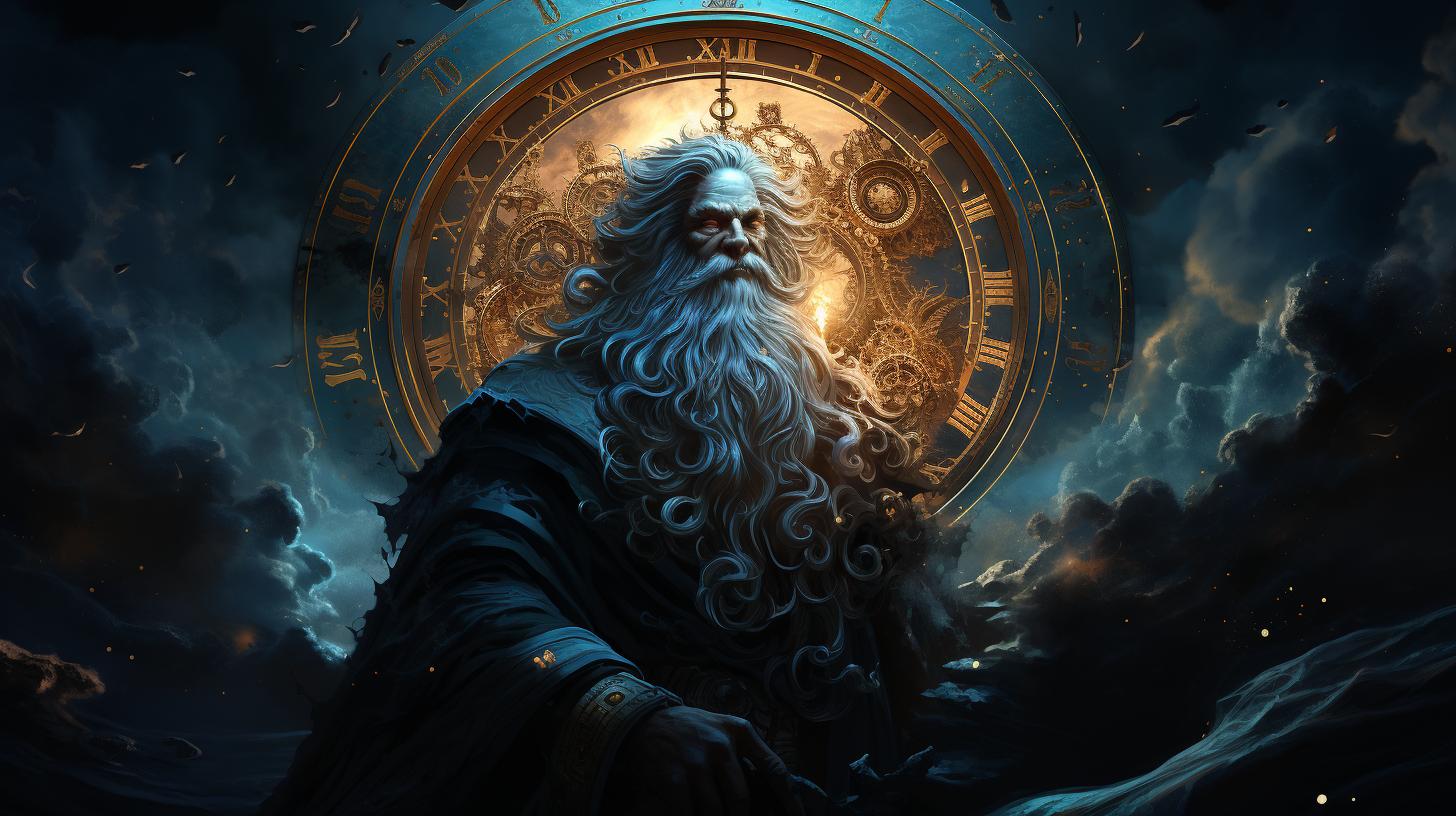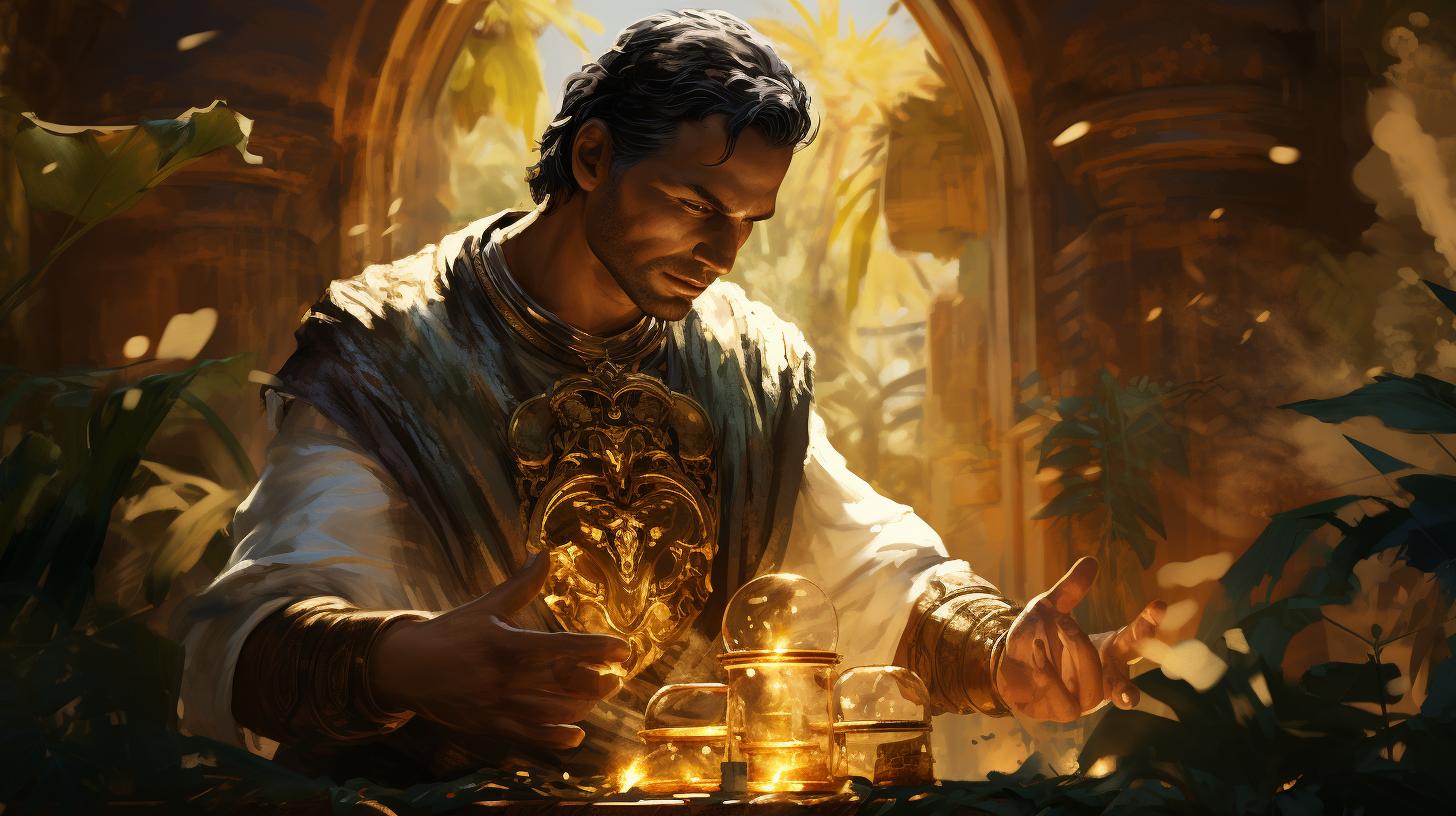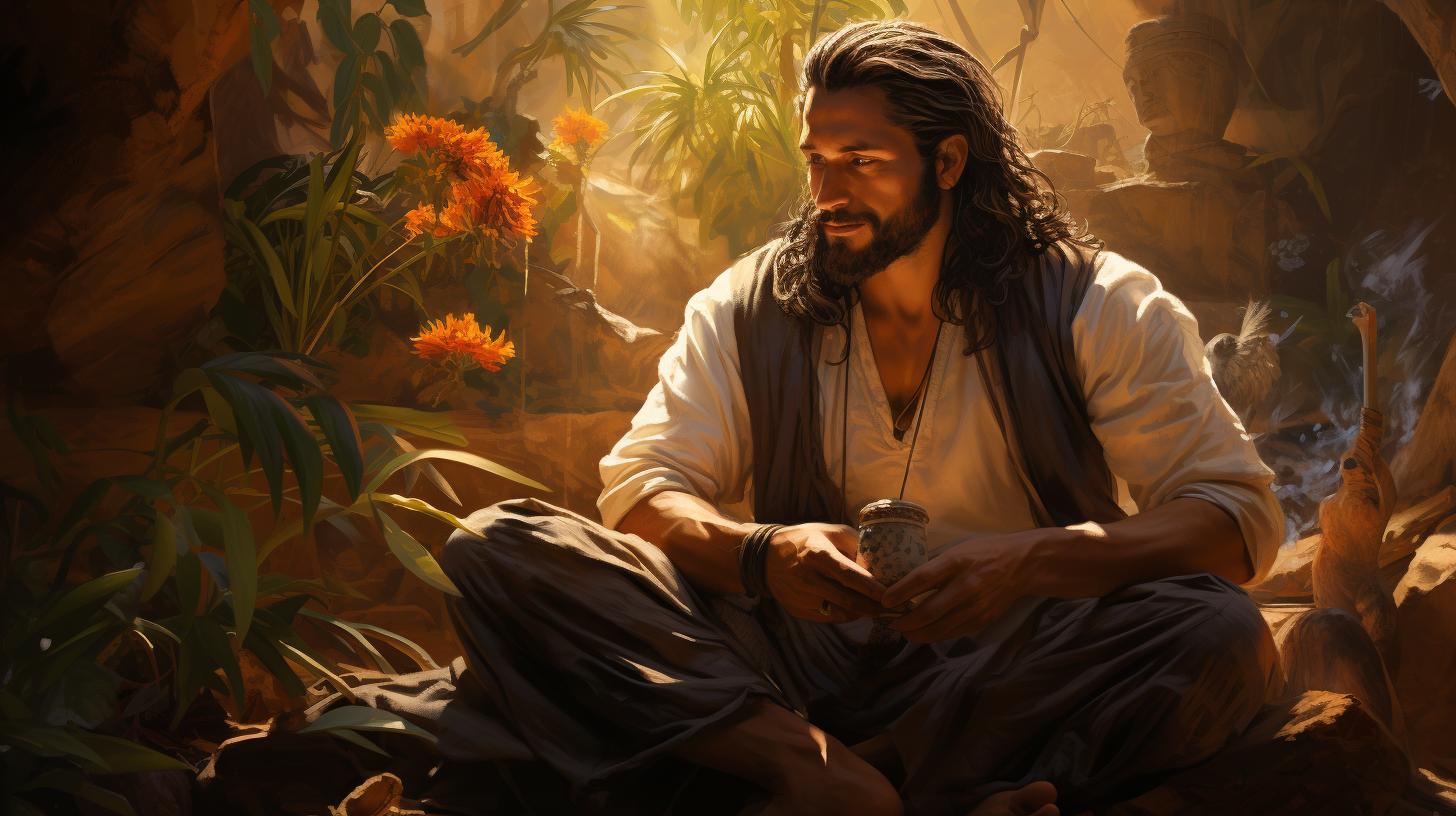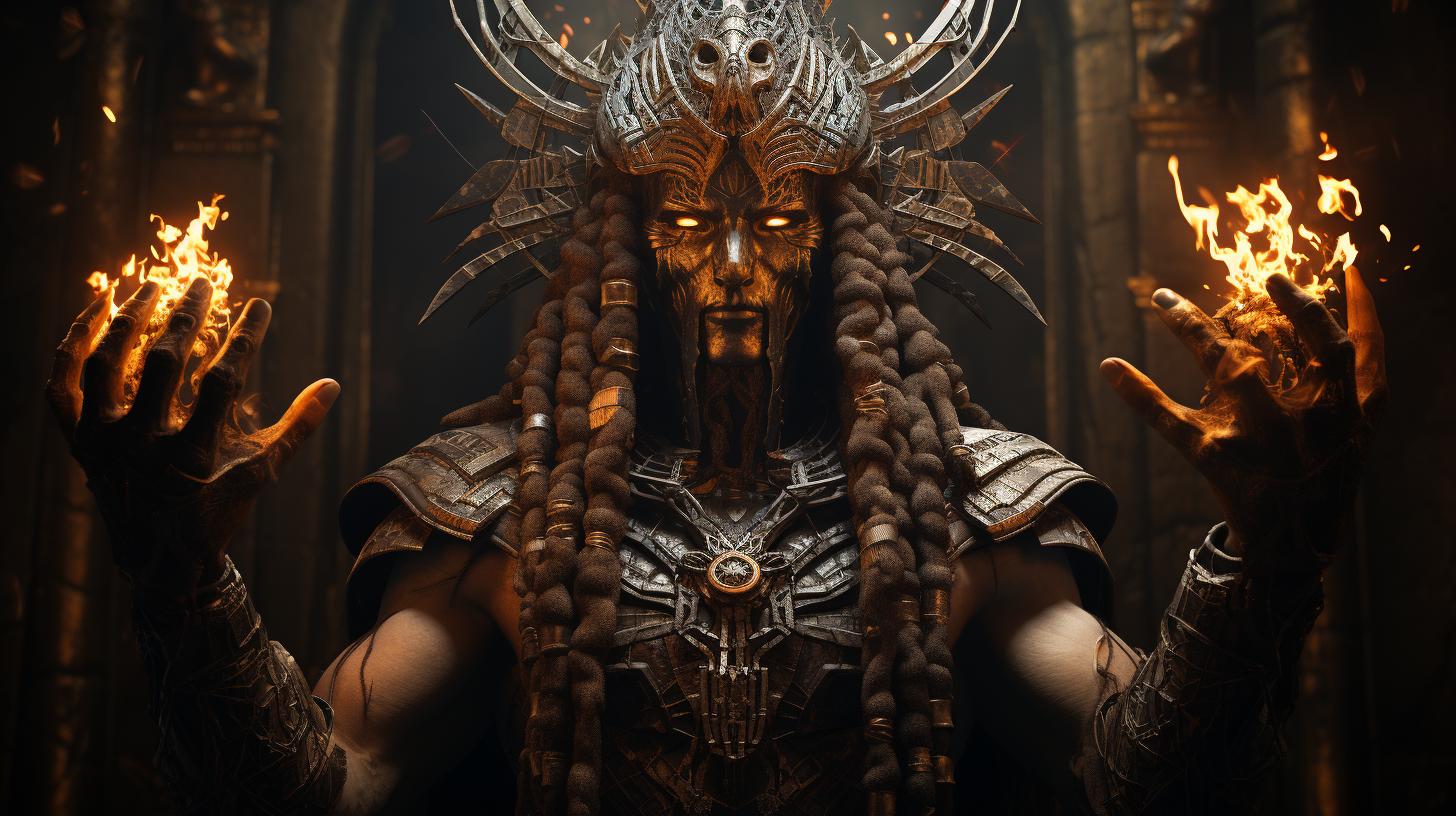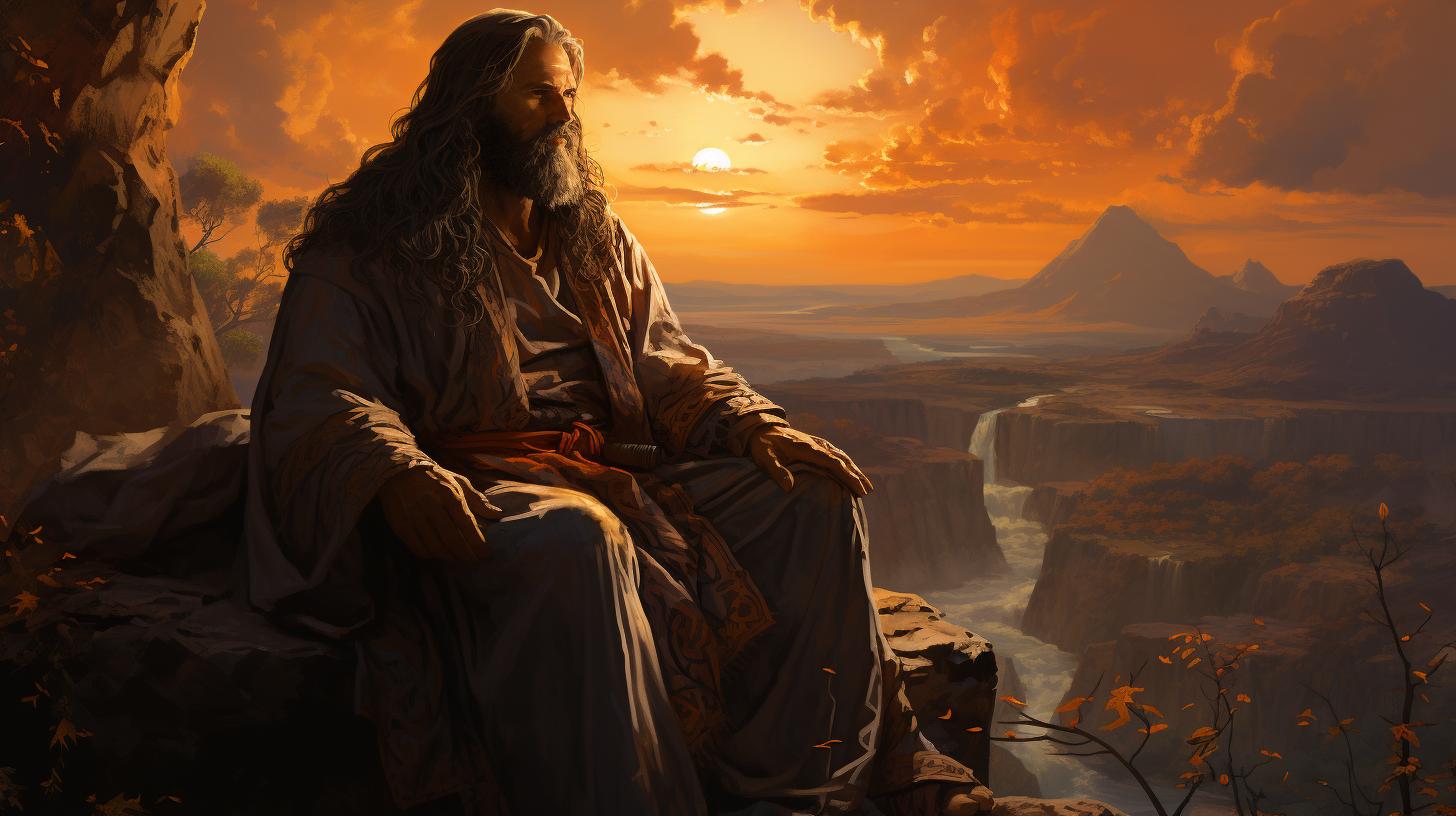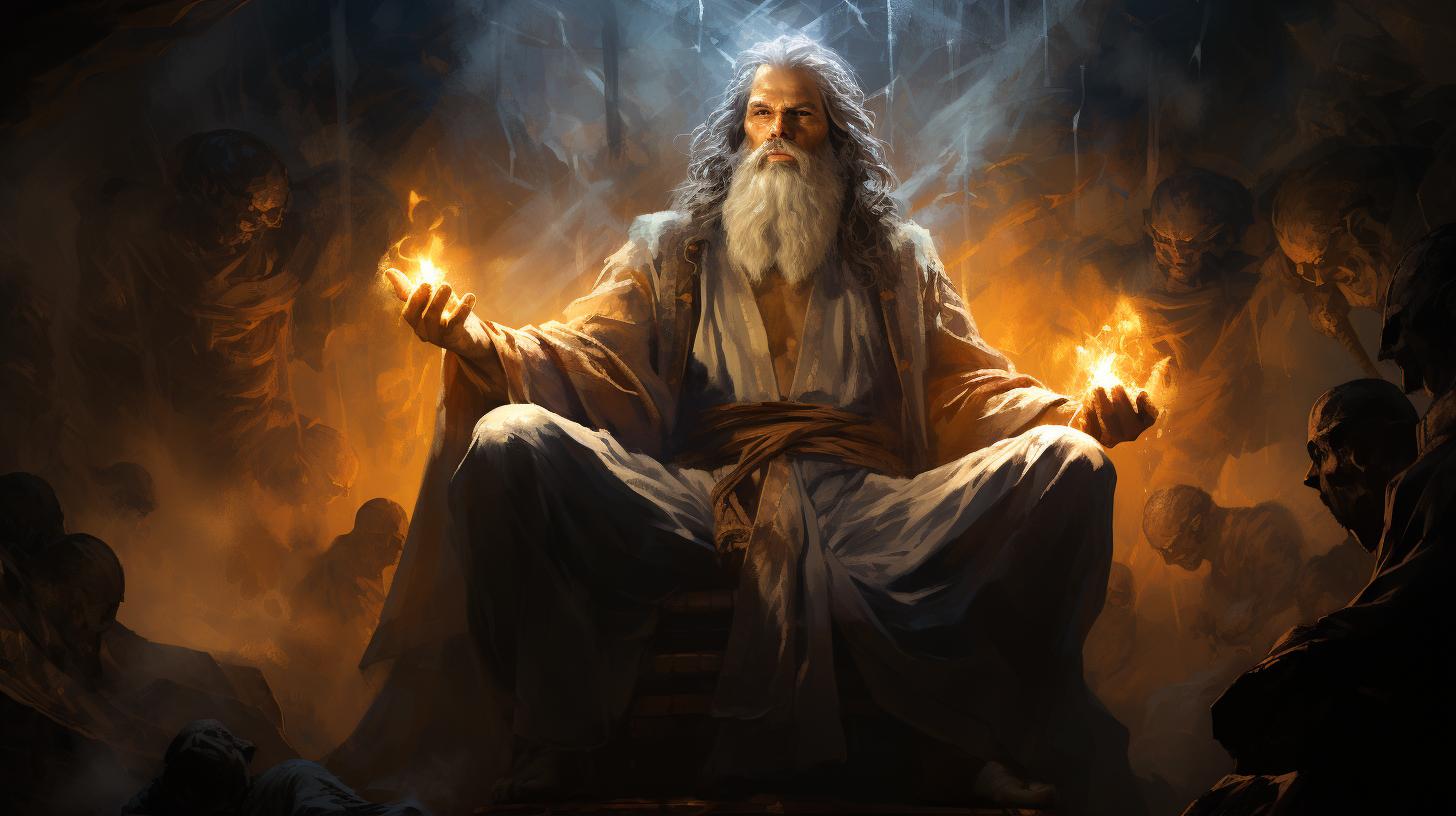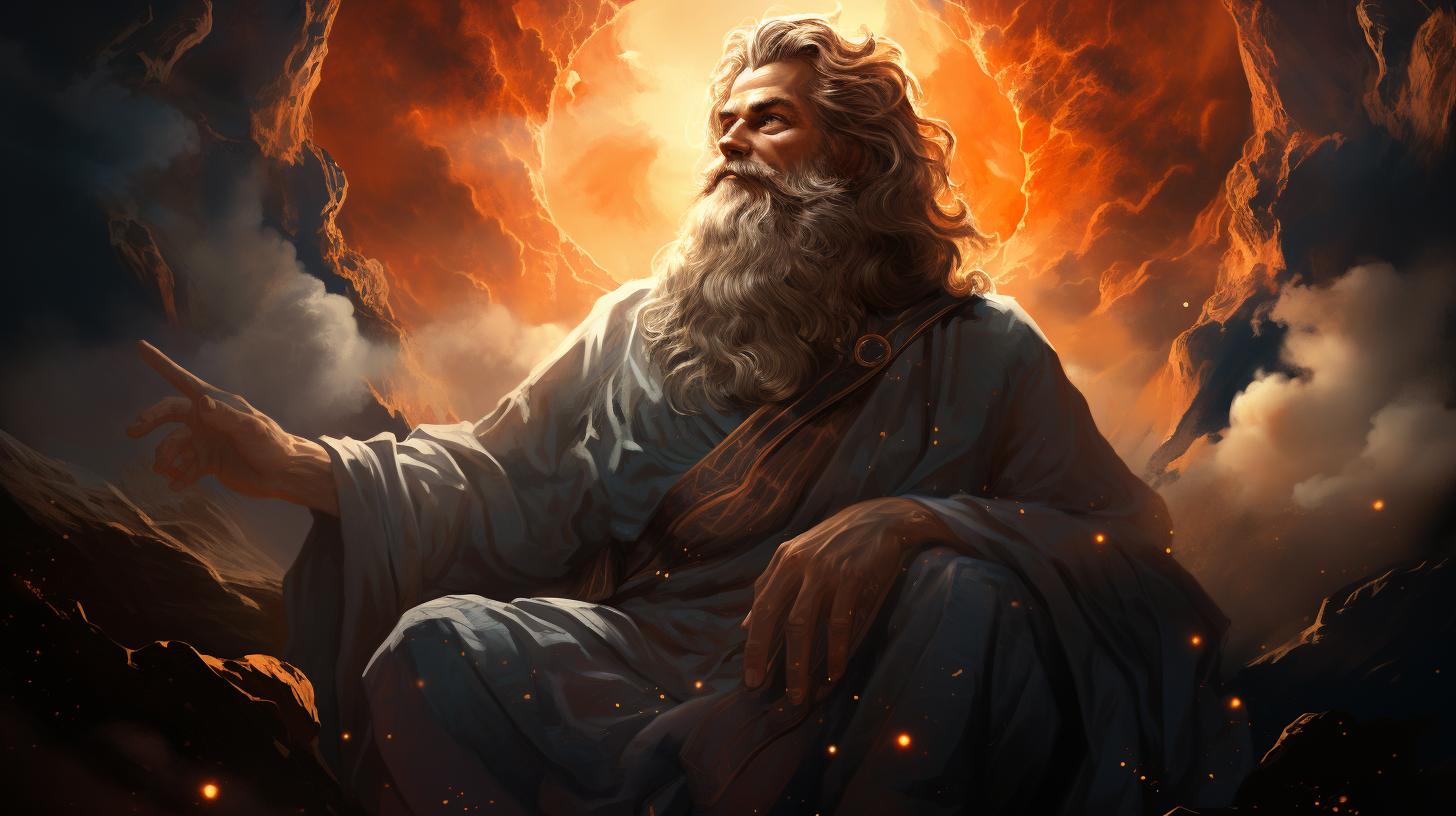Yarikh Moon God: Exploring the Ancient Deity and His Significance

Yarikh Moon God is a prominent figure in ancient Near Eastern civilizations. Worshiped primarily in Ugarit, a city in present-day Syria, Yarikh holds significance in Ugaritic religion and beyond.
Married to the goddess Nikkal, Yarikh’s role is associated with fertility and abundance. This article explores Yarikh’s importance, his worship in Ugarit, and his influence in other ancient Near Eastern cultures.
Additionally, we delve into the symbolism of the moon and its relationship with Yarikh, as well as his connection to the sun goddess Shapash. Join us as we unravel the intriguing world of Yarikh Moon God.
Understanding Yarikh Moon God
The ancient civilization of the Near East was rich with various deities, each playing a significant role in the lives of the people. One such prominent figure is the Yarikh Moon God.
In this section, we will delve into the fascinating world of Yarikh and unravel the mysteries surrounding his role, significance, and worship in Ugaritic religion.
Ancient Near East Deities
To truly comprehend Yarikh’s significance, it is important to understand the broader context of the ancient Near Eastern pantheon. This region was home to numerous deities worshipped by different civilizations, each with their own unique attributes, domains, and cults.
By exploring the diverse pantheon, we can gain insight into Yarikh’s place and importance among these ancient gods.
Yarikh’s Role and Significance
Yarikh played a crucial role in the ancient religious beliefs of the Near East. As a lunar deity, he symbolized the moon and its celestial power. Yarikh’s association with fertility and abundance made him a vital figure in ensuring the prosperity of crops and the well-being of the people.
Understanding his role and significance allows us to appreciate the deep-rooted beliefs and rituals surrounding his worship.
Yarikh in Ugaritic Religion
Among the civilizations of the ancient Near East, Ugarit held a prominent place in the worship of Yarikh. This city, located in present-day Syria, served as the primary center for honoring the moon god.
Delving into the Ugaritic religion sheds light on the specific rituals, myths, and cult practices dedicated to Yarikh, unravelling the mysteries of his worship and shedding light on the profound influence he had on the lives of the people.
Exploring the Family of Yarikh
As we delve into the intriguing aspects of Yarikh, the moon god, it is essential to explore his family connections. This section examines his marriage to Nikkal, the goddess closely associated with him, and sheds light on his children and family tree.
Yarikh’s Marriage to Nikkal
One prominent aspect of Yarikh’s mythology is his marriage to Nikkal, the goddess of fruits and fertility. Their union symbolizes the harmony between the moon and the abundance of the earth.
In Ugaritic religion, it is believed that Nikkal was Yarikh’s wife, although her presence is not widely documented in other Syrian cities.
Yarikh’s Children and Family Tree
The family tree of Yarikh includes several notable figures associated with the moon. While different sources vary in their accounts, some texts mention Yarikh and Nikkal having daughters who personify the new moon.
These lunar goddesses represent the cyclical nature of the moon and its connection to growth and renewal.
Exploring the family of Yarikh provides us with insight into the significant relationships and symbolism associated with the moon god.
His marriage to Nikkal highlights the connection between lunar and earthly abundance, while his children personify the various phases of the moon and its influence on fertility and growth.
The Worship of Yarikh in Ugarit
The worship of Yarikh, the moon god, held a significant place in the religious practices of Ugarit, an ancient Amorite city in present-day Syria.
Yarikh’s cult center in Ugarit served as the primary location for his adoration, although his influence extended to other regions inhabited by the Amorites.
Yarikh’s Cult Center at Ugarit
The cult center of Yarikh in Ugarit played a central role in the religious life of the city. The exact location of the cult center remains uncertain, but it is believed to have been in Larugadu, near Ebla.
It is important to note that, unlike in some other Syrian cities, the worship of Yarikh was not limited to Ugarit alone but also found in Mari and Eshnunna, which were inhabited by the Amorite population.
Rituals and Offerings to Yarikh
Rituals and offerings were integral to the worship of Yarikh in Ugarit. Various religious texts from Ugarit mention Yarikh in the context of rituals and lists of offerings. Devotees sought to honor the moon god by presenting him with offerings, which included food, drink, and other items of symbolic significance.
These rituals were essential in establishing a connection between the worshippers and Yarikh, with the aim of seeking his blessings and favor.
Additionally, Yarikh’s association with fertility and abundance meant that rituals focused on ensuring prosperous harvests and the general well-being of the community.
The marriage of Yarikh to the goddess Nikkal was considered a source of fertility, both in the celestial realm and on Earth.
Yarikh in Other Ancient Near Eastern Cultures
In addition to his significance in Ugaritic religion, Yarikh Moon God had a notable influence on other ancient Near Eastern cultures such as Phoenician religion, Hebrew culture, and Moabite contexts.
Yarikh’s Influence on Phoenician Religion
Yarikh’s prominence extended to Phoenician religion, where he held a secondary role.
He was associated with fertility and abundance, similar to his depiction in Ugaritic mythology. Phoenician cities worshipped him, often in conjunction with other deities like Ba’al and Asherah. The continued veneration of Yarikh in Phoenician religion demonstrates his widespread influence and importance across various cultures in the region.
Yarikh in Hebrew and Moabite Contexts
Yarikh’s influence also reached Hebrew and Moabite contexts. While the biblical Hebrew texts contain warnings against worshiping the moon, it remains unclear whether these specifically refer to Yarikh. However, the presence of names like Jericho and Beth Yerah, which bear his name, suggests a connection to Yarikh’s worship among the ancient Israelites.
In Moabite culture, Yarikh had a role similar to his depiction in Ugaritic mythology as a lunar deity associated with fertility. The worship of Yarikh underscores the shared cultural and religious practices between different ancient Near Eastern societies.
- Phoenician religion held Yarikh in high regard, associating him with fertility and abundance.
- The Hebrew context offers clues to the worship of Yarikh, as evidenced by place names that bear his title.
- In Moabite culture, Yarikh played a vital role as a lunar deity associated with fertility.
Yarikh’s enduring influence on Phoenician, Hebrew, and Moabite cultures testifies to the widespread veneration of this ancient moon god across the ancient Near East.
The Symbolism of the Moon and God Yarikh
Exploring the symbolism of the moon in relation to the god Yarikh unveils fascinating insights into ancient beliefs and cultural significance.
The Moon as a Celestial Body
The moon holds a prominent place in the divine realm, revered across ancient civilizations. Its celestial presence, as a heavenly body, inspired awe and wonder. Across cultures, the moon represented the passage of time, with its waxing and waning cycles signifying various phases of life and death.
In the context of Yarikh, the moon is both a celestial entity and a symbol of fertility and abundance. Its association with Yarikh represents the cyclical nature of growth and sustenance, reflecting the importance of agricultural fertility and bounty in ancient societies.
Yarikh’s Association with Fertility and Abundance
Yarikh, as the moon god, personifies fertility, abundance, and prosperity. In the religious beliefs of Ugarit and surrounding regions, Yarikh’s association with agricultural cycles underscored his role in ensuring fruitful harvests and plentiful resources.
As the moon waxes, Yarikh’s power and influence over fertility increase, symbolizing the growth and maturation of crops, as well as the fertility of both humans and livestock. The moon’s illumination, guided by Yarikh’s presence, was believed to bless the earth and promote prosperity.
Yarikh’s connection with fertility also extended to human relationships, particularly in the context of his marriage to the goddess Nikkal. Their union mirrored the harmonious balance between the moon and fertility, highlighting the essential role of both masculine and feminine energies in sustaining life.
Throughout ancient Near Eastern cultures, the worship of Yarikh, with its emphasis on abundance and fertility, offered devotees hope and assurance in a world strongly connected to the cycles of nature.
The moon’s influence and Yarikh’s symbolic associations served as a reminder of the interconnectedness of humanity and the natural world, nurturing a sense of harmony and dependence on the divine forces represented by the moon god.
- The moon symbolized the passage of time and various phases of life and death
- Yarikh is associated with fertility, abundance, and prosperity
- Yarikh represented the cyclical nature of growth and sustenance
- His marriage to the goddess Nikkal mirrored the harmonious balance between masculinity and femininity
- Worship of Yarikh offered hope and assurance connected to the cycles of nature
Yarikh and the Sun Goddess Shapash
The relationship between Yarikh, the Moon God, and Shapash, the Sun Goddess, is a significant aspect of Canaanite mythology.
Within the ancient pantheon, their interaction and intertwined roles are a subject of intrigue and exploration.
Their Relationship in Canaanite Mythology
In Canaanite mythology, Yarikh and Shapash are seen as complementary forces, representing the celestial bodies of the moon and the sun respectively. They are often depicted as a divine couple, symbolizing the harmony between light and darkness, day and night.
While Yarikh governs the nocturnal realm, Shapash rules over the diurnal. Their contrasting domains create a balance within the cosmic order, showcasing the cyclical nature of time and the eternal dance of light and shadow.
Roles and Interactions of Shapash and Yarikh
Within the mythological narratives, both Shapash and Yarikh play distinct roles that intertwine in crucial ways. Shapash serves as a messenger of El, the chief deity, carrying messages between gods and humans.
Her radiance guides those in darkness and sustains the growth of crops.
Yarikh, on the other hand, is the protector and caretaker of the living during the night. His lunar crescent horns represent the waxing and waning phases of the moon, signifying the cycle of life and death.
In some myths, Yarikh’s frequent intoxication becomes problematic for other gods, highlighting the complexities within the divine pantheon. Despite this, his role as a guide for the dead ensures a safe passage to the underworld, where Shapash also holds a significant presence.
Together, Shapash and Yarikh embody the interconnectedness of celestial bodies and their influence on the realms of the living and the supernatural. Their relationship in Canaanite mythology serves as a reflection of the vital roles played by the sun and moon in the ancient Near Eastern worldview.
- Their relationship symbolizes the balance between light and darkness.
- Shapash acts as a messenger between gods and humans, while Yarikh protects the living during the night.
- Yarikh’s drunkenness causes conflicts among other gods, yet he is essential for guiding the dead.
- Shapash’s radiance sustains growth while Yarikh’s lunar crescent horns represent the cycle of life and death.
The Journey Through the Underworld
Within the mythological beliefs of the ancient Near East, Yarikh, the moon god, played a crucial role as a guide for the dead in their journey through the underworld.
This section explores Yarikh’s role in guiding souls after death, as well as the significant contributions of the sun goddess Shapash in the afterlife.
Yarikh’s Role as a Guide for the Dead
According to ancient Canaanite mythology, Yarikh was responsible for shepherding the souls of the deceased through the perilous realm of the underworld.
As the lord of the hoz, Yarikh safeguarded the spirits during the nighttime, ensuring their safe passage and protection from malevolent forces.
Yarikh’s horns symbolize the waxing and waning phases of the moon, representing the cyclical nature of life and death.
His presence offered solace and guidance to the souls, leading them on their transformative journey towards the afterlife.
Shapash’s Role in the Afterlife
Shapash, the sun goddess, played a crucial role alongside Yarikh in the journey through the underworld. As the “Torch of the Gods,” she illuminated the path of the deceased, providing vital light and energy in the darkness of the underworld.
Shapash’s radiance intensified during the search for Ba’al’s body in the mythological Ba’al Cycle, ensuring the growth of crops and sustaining life in the realm of the living. Her connection to the afterlife allowed her to communicate with both deities and humans, facilitating the resolution of difficult situations.
Working together, Yarikh and Shapash provided a guiding light for the souls navigating the realm of the dead, ensuring safe passage and the continuity of life in the cosmos of the ancient Near East.

